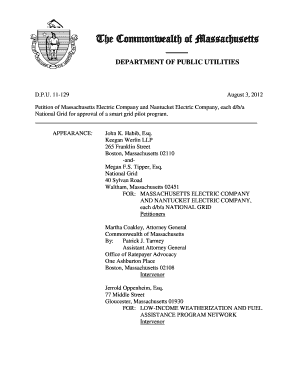Decoding The Proxy Statement (Form DEF 14A): Key Information And Analysis

Table of Contents
Understanding the Purpose of a Proxy Statement (DEF 14A)
The primary purpose of a proxy statement (DEF 14A) is to solicit shareholder votes on important matters related to the company. It's a critical tool for corporate governance, ensuring shareholders have the information necessary to exercise their rights and participate in decision-making processes. This document is not merely a formality; it's a vital communication channel between a company and its owners. Ignoring it could mean missing out on crucial information impacting your investment.
- Provides information on upcoming shareholder meetings: The DEF 14A details the date, time, and location (if applicable) of the shareholder meeting, outlining the agenda and matters to be voted upon.
- Outlines proposals for shareholder votes (e.g., electing directors, approving mergers): This section provides detailed descriptions of each proposal, allowing shareholders to make informed decisions. You'll find the rationale behind each proposal and the potential consequences of voting for or against it.
- Discloses executive compensation and benefits: The proxy statement offers a transparent view into how much executives are paid, including salaries, bonuses, stock options, and other benefits.
- Details company’s corporate governance structure: This section illuminates the company's board of directors, its committees, and their responsibilities, providing insights into the company's oversight and management.
Key Sections of a Proxy Statement (DEF 14A) to Analyze
The DEF 14A is a lengthy document, but focusing on these key sections will provide the most valuable insights:
Executive Compensation
Analyzing executive pay packages is essential for understanding potential conflicts of interest and evaluating the alignment of executive incentives with company performance. Look for key metrics such as:
- Salary: Base salary paid to executives.
- Bonuses: Performance-based bonuses awarded to executives.
- Stock options: Options granted to executives to purchase company stock at a specific price.
By comparing these figures to industry benchmarks and analyzing trends over time, investors can determine if executive compensation is reasonable and appropriately tied to company performance.
- Identify potential conflicts of interest: Scrutinize the relationships between executives and the board of directors to identify any potential conflicts.
- Compare compensation to industry benchmarks: Use industry data to see if executive compensation is in line with similar companies.
- Assess the alignment of executive pay with company performance: Examine the correlation between executive compensation and the company's financial results.
Corporate Governance
Understanding the company's board structure and committees is crucial for assessing its corporate governance practices. Key aspects to review include:
- Board composition and diversity: Analyze the backgrounds, expertise, and diversity of the board members. A diverse board generally brings a wider range of perspectives and expertise.
- Roles and responsibilities of key committees (audit, compensation, nominating): Review the charters of these committees to understand their oversight responsibilities.
- Independence of the board: Evaluate the independence of directors from management to ensure objective oversight. Look for any potential conflicts of interest among board members.
Shareholder Proposals
Shareholder proposals allow shareholders to suggest changes to company policies or practices. Carefully review these proposals, considering:
- Context and rationale behind each proposal: Understand the reasons behind the proposal and its potential impact.
- Potential impact on the company and shareholders: Assess how the proposal might affect the company's strategy, financial performance, and shareholder value.
- Potential conflicts of interest related to the proposals: Identify any potential conflicts of interest between the proposers and the company.
Risk Factors and Business Overview
This section provides critical insights into the company's strategy, operations, and potential challenges. Focus your analysis on:
- Key business risks: Identify and assess the significant risks facing the company, such as competition, regulatory changes, or economic downturns.
- Financial health and outlook: Review the company's financial statements and projections to assess its financial stability and future prospects.
- Strategic direction: Understand the company's strategic goals and plans for achieving them.
Practical Tips for Analyzing a Proxy Statement (DEF 14A)
Analyzing a proxy statement effectively requires a systematic approach:
Using Online Resources
Several online resources simplify accessing and analyzing DEF 14A filings:
- SEC's EDGAR database: The primary source for SEC filings, including proxy statements.
Comparing to Previous Years
Trend analysis is essential. Compare the current year's proxy statement to previous years' to identify significant changes in executive compensation, corporate governance, or shareholder proposals.
Seeking Professional Advice
For complex situations or significant investments, consider consulting with a financial advisor or other qualified professionals.
- Utilize SEC's EDGAR database for easy access: This free online database makes finding and downloading DEF 14A filings straightforward.
- Compare current year's proxy statement with previous years' to identify trends and changes: Looking at historical data provides valuable context and helps identify any significant shifts in company strategy or governance.
- For complex situations or significant investments, consult with a financial advisor: A professional can provide valuable insights and guidance on interpreting complex financial information within the DEF 14A.
Conclusion
Successfully navigating the intricacies of a proxy statement (DEF 14A) is essential for informed investment decisions. By carefully reviewing the key sections outlined above – executive compensation, corporate governance, shareholder proposals, and business overview – investors can gain valuable insights into a company's operations and future prospects. Remember to utilize online resources and consider consulting a professional for complex analyses. Mastering the art of analyzing the proxy statement (DEF 14A) empowers you to make well-informed investment choices and actively participate in corporate governance. Don't hesitate to delve deeper into your next DEF 14A filing.

Featured Posts
-
 A 48 Year Old Star Wars Mystery Is The Planet Finally Revealed
May 17, 2025
A 48 Year Old Star Wars Mystery Is The Planet Finally Revealed
May 17, 2025 -
 Evaluating The Feasibility Of Trumps F 55 And F 22 Modernization Plans
May 17, 2025
Evaluating The Feasibility Of Trumps F 55 And F 22 Modernization Plans
May 17, 2025 -
 Nekretnine U Inostranstvu Najpopularnije Destinacije Medu Srbima
May 17, 2025
Nekretnine U Inostranstvu Najpopularnije Destinacije Medu Srbima
May 17, 2025 -
 The Chinese Markets Impact On Premium Car Brands Bmw Porsche And The Future
May 17, 2025
The Chinese Markets Impact On Premium Car Brands Bmw Porsche And The Future
May 17, 2025 -
 Barcelonsko Finale Rune Bolji Od Alcarasa
May 17, 2025
Barcelonsko Finale Rune Bolji Od Alcarasa
May 17, 2025
